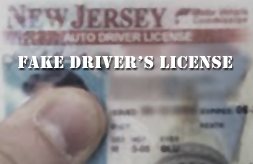
SHOPLIFTING | N.J.S.A. 2C:20-11
ILLUSTRATIVE EXAMPLE:
Shopping – Your children need clothes so you go to Kohls. You’ve got a few items you bought there last week that need to be exchanged. You’ve left those items in Kohl’s bags and you bring them with you into the store. You grab a shopping cart and you place the bags of items to be returned in the cart. You start picking out new items and you suddenly get the idea that if you place them under the Kohl’s bags containing the items to be returned, you might be able to walk out of the store without paying for them. You finally go to the cashier and you only pay for a few of the new items that are not concealed under the Kohl’s bags. The total retail value of the goods you’ve concealed is $211.47. As you clear the registers and are about to leave the store you are apprehended by security and detained. Have you just committed a serious criminal offense?
SHOPLIFTING
a. “Definitions. The following definitions apply to this section:
(1) “Shopping cart” means those push carts of the type of types which are commonly provided by grocery stores, drug stores, or other retail mercantile establishments for the use of the public in transporting commodities in stores and markets and, incidentally, from the stores to a place outside the store;
(2) “Store or other retail mercantile establishment” means a place where merchandise is displayed, held, stored or sold or offered to the public for sale;
(3) “Merchandise” means any goods, chattels, foodstuffs or wares of any type And description, regardless of the value thereof;
(4) “Merchant” means any owner or operator of any store or other retail mercantile establishment, or any agent, servant, employee, lessee, cosignee, officer, director, franchisee or independent contractor of such owner or proprietor;
(5) “Person” means any individual or individuals, including an agent, servant
or employee of a merchant where the facts of the situation so require;
(6) “Conceal” means to conceal merchandise so that, although there may be some notice of its presence, it is not visible through ordinary observation;
(7) “Full retail value” means the merchant’s stated or advertised price of the
merchandise;
(8) “Premises of a store or retail mercantile establishment” means and includes but is not limited to, the retail mercantile establishment; any common use areas in shopping centers and all parking areas set aside by a merchant or on behalf of a merchant for the parking of vehicles for the convenience of the patrons of
such retail mercantile establishments;
(9) “Under-ring” means to cause the cash register or other sale recording device to Reflect less than the full retail value of the merchandise;
(10) “Antishoplifting or inventory control device countermeasure” means any item or device which is designed, manufactured, modified, or altered to defeat any antishoplifting or inventory control device;
(11) “Organized retail theft enterprise” means any association of two or more persons who engage in the conduct of or are associated for the purpose of effectuating the transfer or sale of shoplifted merchandise;
b. Shoplifting. Shoplifting shall consist of any one or more of the following acts:
(1) For any person purposely to take possession of, carry away, transfer or cause to be carried away or transferred, any merchandise displayed, held, stored or offered for sale by any store or other retail mercantile establishment with the intention of depriving the merchant of the possession, use or benefit of such merchandise or converting the same to the use of such person without paying to the merchant the full retail value thereof.
(2) For any person to purposely conceal upon his person or otherwise any merchandise offered for sale by any store or other retail mercantile establishment with the intention of depriving the merchant of the processes, use or benefit of such merchandise or converting the same to the use of such person without paying to the merchant the value thereof.
(3) For any person purposely to alter, transfer or remove any label, price tag or marking indicia of value or any other markings which aid in determining value affixed to any merchandise displayed, held, stored or offered for sale by any store or other retail mercantile establishment and to attempt to purchase such merchandise personally or in concert with another at less than the full retail value with the intention of depriving the merchant of all or some part of the retail value thereof.
(4) For any person purposely to transfer any merchandise displayed, held, stored or offered for sale by any store or other retail mercantile establishment from the container in or on which the same shall be displayed to any other container with intent to deprive the merchant of all or some part of the retail value thereof.
(5) For any person purposely to under-ring with the intention of depriving the merchant of the full retail value thereof.
(6) For any person purposely to remove a shopping cart from the premises of a store or other retail mercantile establishment without the consent of the merchant given at the time of such removal with the intention of permanently depriving the merchant of the possession, use or benefit of such cart.
c. Gradation.
(1) Shoplifting constitutes a crime of the second degree under subsection b. of this section if the full retail value of the merchandise is $75,000.00 or more, or the offense is committed in furtherance of or in conjunction with an organized retail theft enterprise and the full retail value of the merchandise is $1,000.00 or more.
(2) Shoplifting constitutes a crime of the third degree under subsection b. of this section if the full retail value of the merchandise exceeds $500.00 but is less than $75,000.00, or the offense is committed in furtherance of or in conjunction with an organized retail theft enterprise and the full retail value of the merchandise is $1,000.00 or more.
(3) Shoplifting constitutes a crime of the fourth degree under subsection b. of this section if the full retail value not the merchandise is at least $200.00 but does not exceed $500.00.
(4) Shoplifting is a disorderly persons offense under subsection b. of this Section if the full retail value of the merchandise is less than $200.00.
The value of the merchandise involved in a violation of this section may be aggregated in determining the grade of the offense where the acts or conduct constituting a violation were committed pursuant to one scheme or course of conduct, whether from the same person or several persons, or were committed in furtherance of or in conjunction with an organized retail theft enterprise.
Additionally, notwithstanding the term of imprisonment provided in N.J.S.A. 2C:43-6 or N.J.S.A. 2C:43-8, any person convicted of a shoplifting offense shall be sentenced to perform community service as follows: for a first offense, at least ten (10) days of community service; for a second offense at least fifteen (15) days of community service; and for a third or subsequent offense, a maximum of twenty five (25) days of community service and any person convicted of a third or subsequent shoplifting offense shall serve a minimum term of imprisonment of not less than ninety (90) days.
d. Presumptions. Any person purposely concealing unpurchased merchandise of any store or other retail mercantile establishment, either on the premises or outside the premises of such store or other retail mercantile establishment, shall be prima facie presumed to have so concealed such merchandise with the intention of depriving the merchant of the possession, use or benefit of such merchandise without paying the full retail value thereof, and the finding of such merchandise concealed upon the person or among the belongings of such person shall be prima facie evidence of purposeful concealment; and if such person conceals, or causes to be concealed, such merchandise upon the person or among the belongings of another, the finding of the same shall also be prima facie evidence of willful concealment on the part of the person so concealing such merchandise.
e. A law enforcement officer, or special officer, or a merchant, who has probable for believing that a person has willfully concealed unpurchased merchandise and that he can recover the merchandise by taking the person into custody, may, for the purpose of attempting to effect recovery thereof, take the person into custody and detain him in a reasonable manner for not more than a reasonable time, and the taking into custody of a law enforcement officer or special officer or merchant shall not render such person criminally or civilly liable in any manner or to any extent whatsoever. Any law enforcement officer may arrest without warrant any person he has probable cause for believing has committed the offense of shoplifting as defined in this subsection. A merchant who causes the arrest of a person for shoplifting, as provided for in this section, shall not be criminally or civilly liable in any manner or to any extent whatsoever where the merchant has probable cause for believing that the person arrested committed the offense of shoplifting.
f. Any person who possesses or uses any anti shoplifting or inventory control device Countermeasure within any store or other retail mercantile establishment is guilty of a disorderly persons offense.”
The answer to the question is YES. You’ve committed a fourth degree crime because the retail value of the goods you concealed is in excess of $200.00. The charges will be sent to the Superior Court for review as a possible indictable crime (felony). You would have exposure on a fourth degree offense for monetary fines up to $10,000.00, possible jail time of up to eighteen months, plus community service and a criminal record. For a third degree crime, the sentence would be monetary fines up to $15,000.00, possible jail time up to five (5) years, community service and a criminal record. N.J.S.A. 2C:43-3(b)
If you have been charged with violation of the shoplifting statute you need to retain a skilled and experienced attorney to protect your interests immediately.




